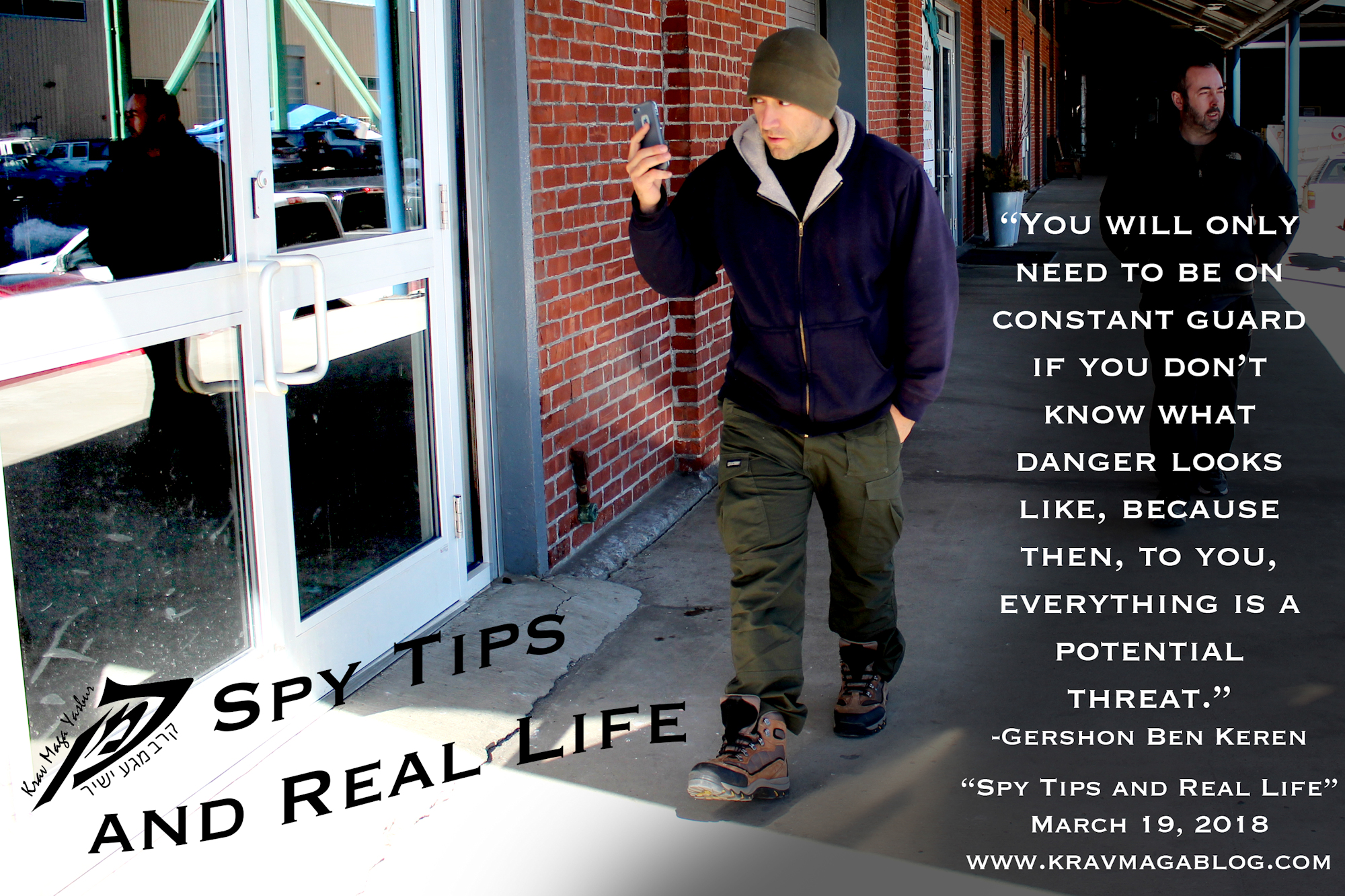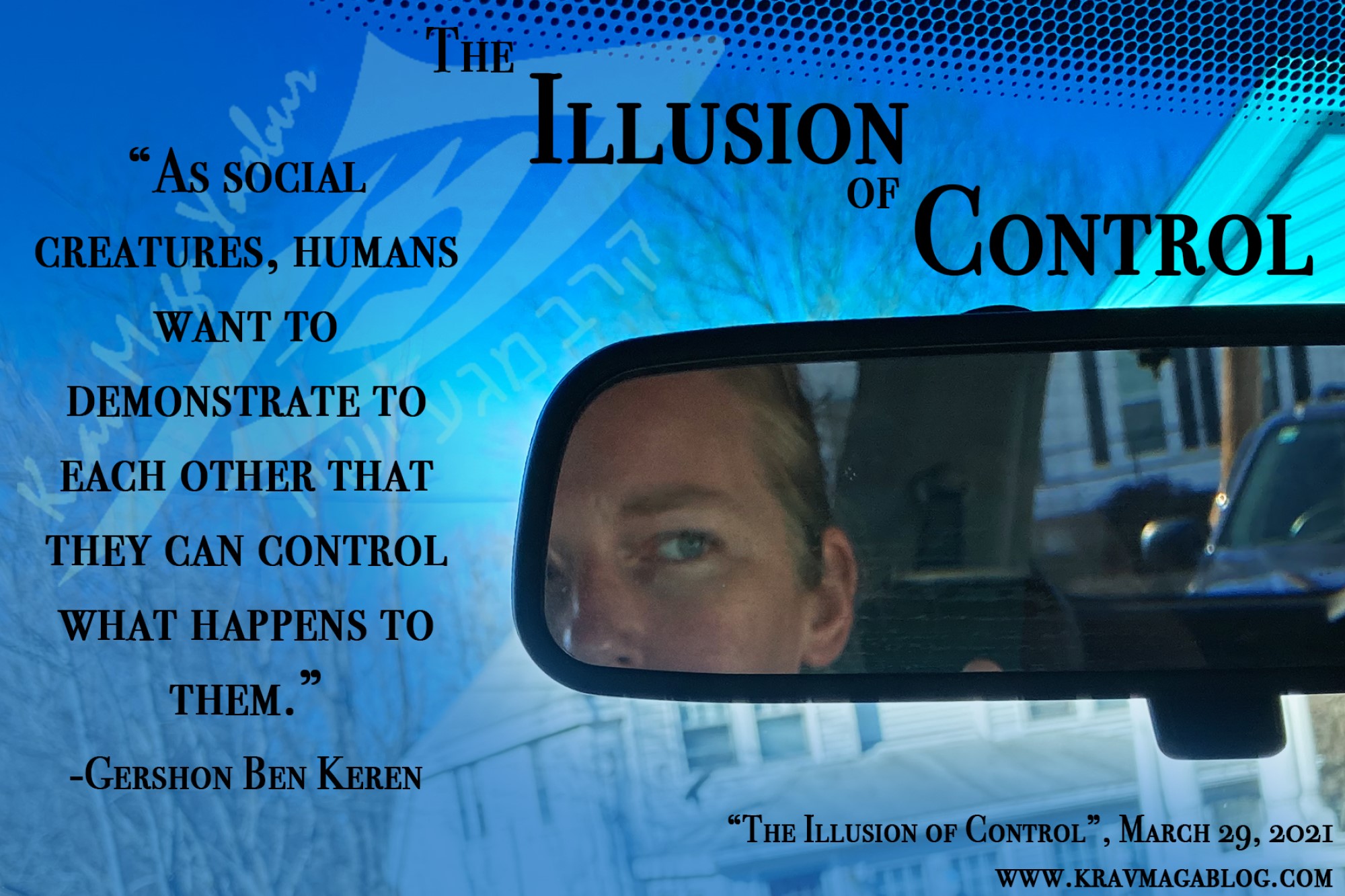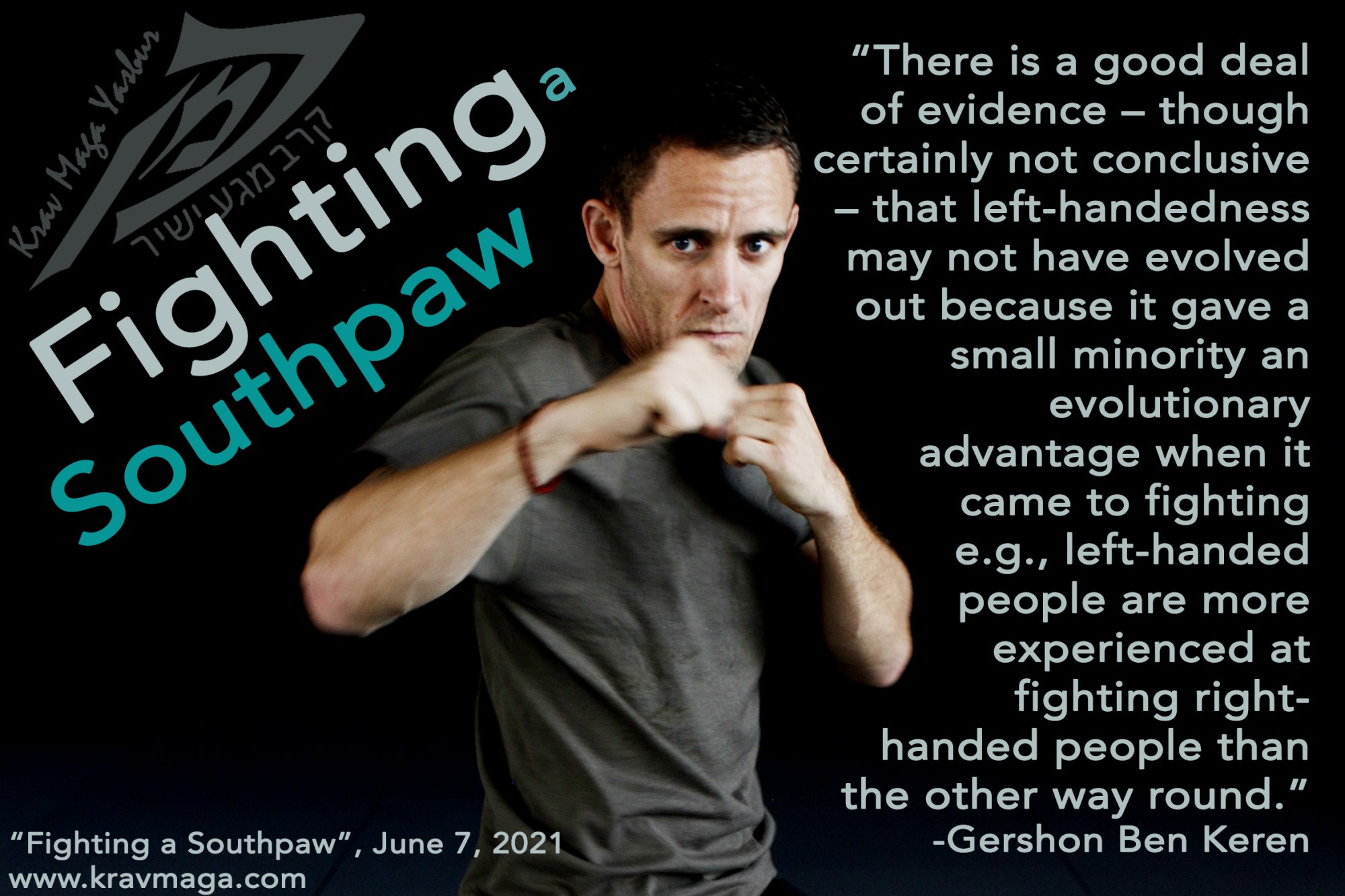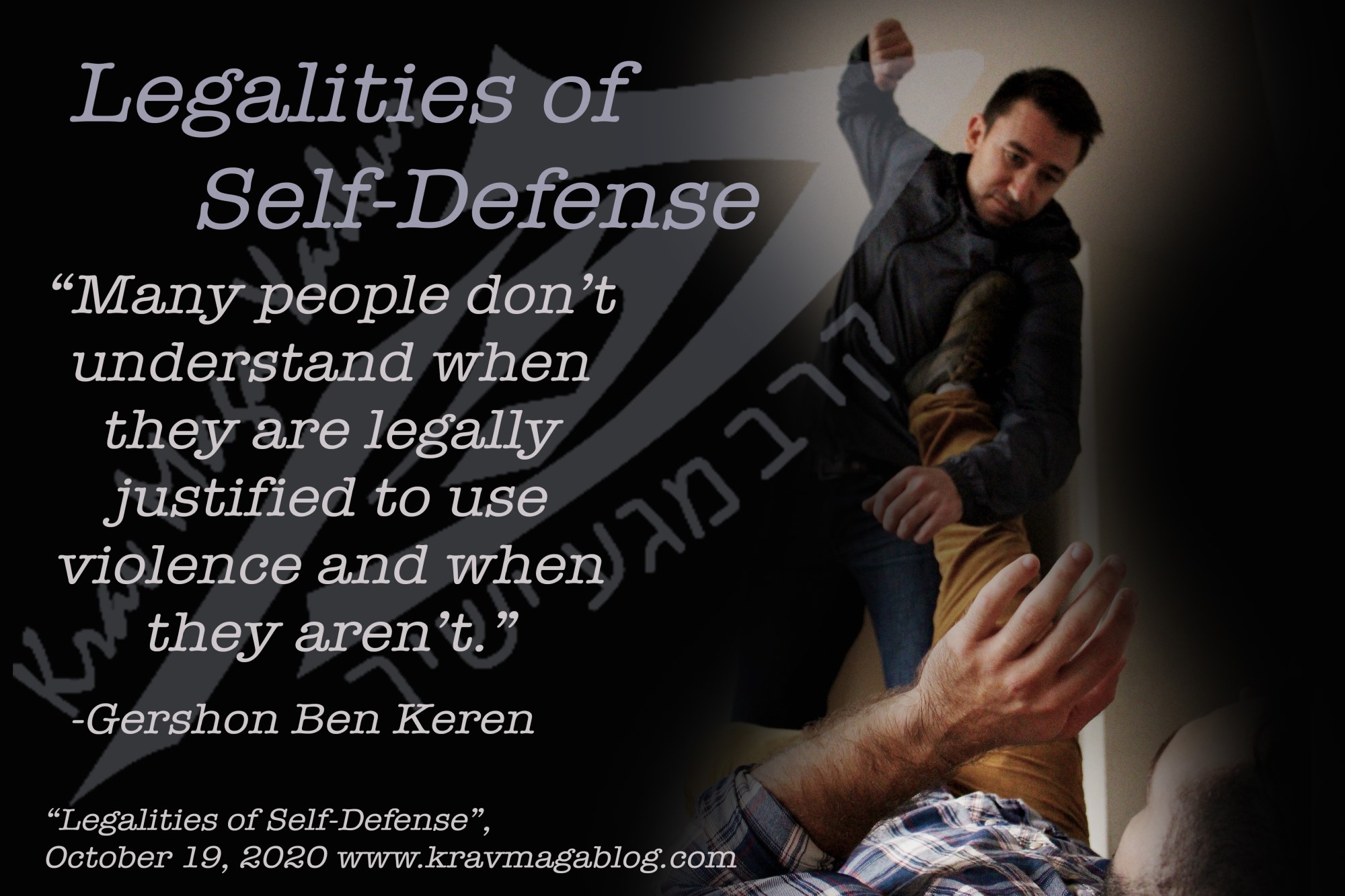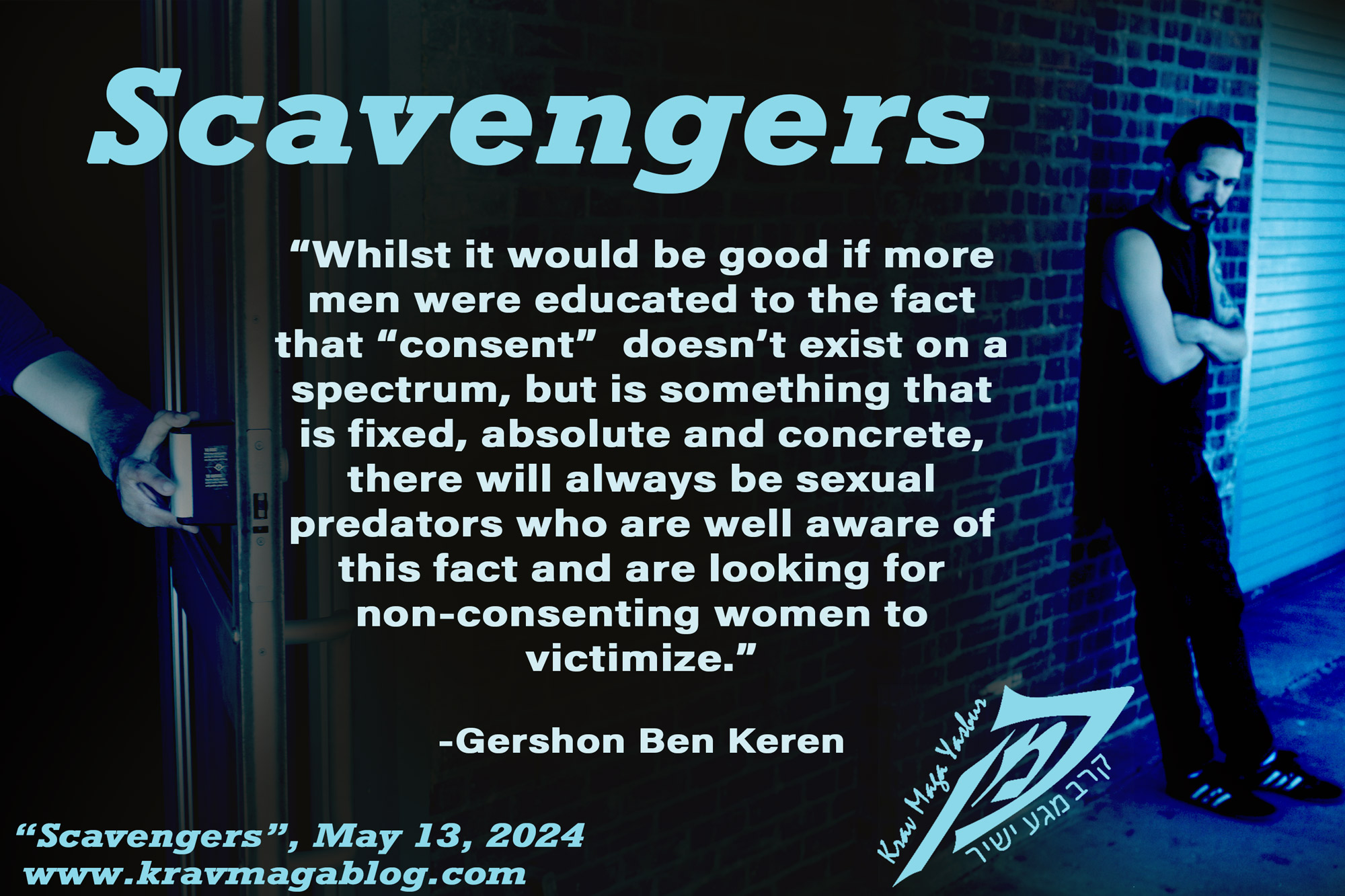Legalities of Self-Defense, is an article written by Gershon Ben Keren, a 5th Degree Black Belt in Krav Maga, who teaches Krav Maga in Boston, MA. He has also authored three Amazon best-Selling Books on Krav Maga.
When we talk about “self-defense”, we aren’t referring to a system/style or even an approach, but to the legal use of violence; in fact, to make a claim of self-defense you are admitting to using physical force against another person(s). However, you are making the argument that you were justified in doing so. Unfortunately, many people don’t understand when they are legally justified to use violence and when they aren’t, and often believe erroneously that what is morally right must be legally right and/or that conjecture and possibility – the other person could have been carrying a knife – allows them to use force beyond what is legally permitted, etc. with the line, “better to be judged by twelve, than carried by six”, as the argument to justify this position. In this article, I want to look at three legal concepts that pertain to self-defense, and which should be taken into consideration when we think about solutions to different situations. These are: Assault, Battery and Separation. This article will also look at how your “role” in a physical confrontation might change, so that you end up losing the right to make a claim of self-defense for the complete duration of the conflict.
Although the exact definition of assault may vary by jurisdiction, generally two conditions must be met for assault to occur. These are: 1. you must fear for your safety/believe you are in imminent physical danger, and 2. your aggressor (potential assailant) must be in a position where they can make physical contact with you. If these two conditions have been met – it is another thing to demonstrate/prove them – then an “assault” has occurred and you are entitled to act in self-defense to protect yourself e.g. you could make a pre-emptive attack/assault. In my time working bar/club/pub security, I have seen on many occasions people commit assaults without realizing what they are doing e.g. there’s an argument/dispute over who was next in line to be served at the bar, and one party steps up to the other and makes some form of statement that if they don’t get behind them they’ll be sorry; they’ve actively moved to a position where they could make contact with the other person, and articulated some form of threat, that gives them a reason to fear for their safety/expect imminent harm to occur. What the individual doing all of this is probably thinking is that if they “posture” to the other person, they’ll back down, and don’t realize that if the other individual decided to take a swing at them, they may well have the makings of a claim of self-defense – to do so they’d also have to demonstrate amongst other things, that they didn’t have an opportunity to disengage and walk away, etc. What some people see as a simple show of force could in fact be legally defined as an assault.
It is worth noting that there is a big difference between claiming that you were assaulted and demonstrating it, which you may be required to do if things go legal. When I worked on the door, one of the first things I would do – where possible – was to take an active step back when somebody would become aggressive towards me. This wasn’t always possible as depending on the security role you were performing you might need to “protect” the “door”, to prevent people from getting in, which could see you moving forward towards an aggressor(s). However, where possible, I’d take a step back. This would give me a better view of the person I was dealing with, and let me see their hands, as well as getting myself ready to deal with them physically (my first strategy usually being to resolve the conflict verbally). It also meant that if the person stepped towards me, I could easily demonstrate that they a. gave me reason to fear for my safety, and b. were putting themselves in a position where they could make contact with me. I would also put my arms/hands out in a placating manner, rather than adopting a “fighting stance” so they would be unable to claim that I’d given them a reason to fear for their safety etc. I can’t remember working in an establishment that didn’t have CCTV, and even without audio, stepping back and raising the hands up in this manner, gave a strong/powerful visual to reinforce a claim of self-defense.
Battery can be viewed/described as, unwanted/non-consensual touching, that results in harmful and/or offensive contact. Assault can be viewed as the preceding acts that are needed to be in place for an act of battery to be committed. If somebody aggressively pokes you in the chest, even if it doesn’t leave a mark or hurt, and the contact is unwanted and offensive, then battery has occurred. It doesn’t matter if the other person didn’t intend to use any greater force than this e.g., they had no intention of punching you etc.; that simple act of them making contact constitutes “battery”. When it comes to defining an act of assault and battery, the degree of contact isn’t important, it’s the fact that any contact at all is made. Once again it is important to remember that it is one thing to be able to claim something and another to demonstrate it.
You have probably watched/seen YouTube clips/videos where a gun disarm is performed, and the person making the disarm steps back, taps and racks the firearm, and instructs their aggressor to get down on the floor etc. Although this all may seem as one continuous event/incident it isn’t necessarily so from a legal perspective, as you have gone from being the person having a gun pointed at you, to a position where you are now pointing a gun at the other person. At this point, a separation has occurred and you are no longer in imminent danger and/or have reason to fear for your life. If you were to pull the trigger at this moment it would be very hard for you to make a claim of self-defense – unless you could prove prior knowledge that they had another firearm on them, and were attempting to reach it etc. The same would be true if you threw somebody to the ground, you remained standing, and then you preceded to kick and punch them, or try to follow up with an armbar, choke or similar. The moment that you are standing – and have an opportunity to disengage – and choose to continue the fight, when you weren’t in imminent danger, your role has changed; your use of violence up and to this point may have been justified, and your claim of self-defense believed, but now you have lost that right and claim – and it may well be that your “original” aggressor can now make a claim of self-defense against you.
Obviously, these are simplified scenarios that are designed to illustrate some key legal concepts, and in real life, things may be more nuanced, however in some jurisdictions if you are involved in a physical confrontation all parties are required to defend their actions in a court of law, regardless of how the incident occurred or what their part in it was. At this point it will be your attorney that frames the argument of “self-defense”, however if you have acted in a way that is legally defensible and justifiable you will have given yourself the best chance of being proved not guilty.
0 COMMENTS
